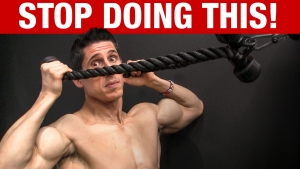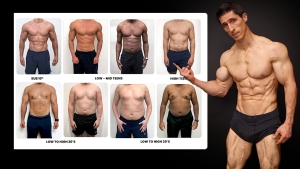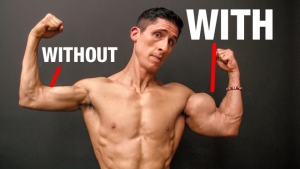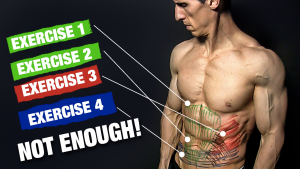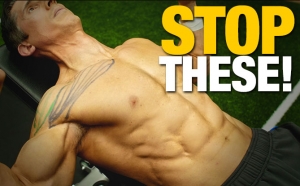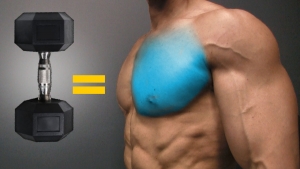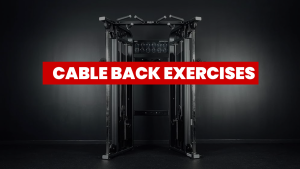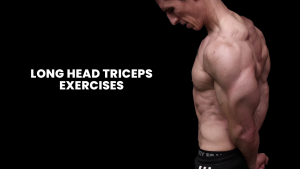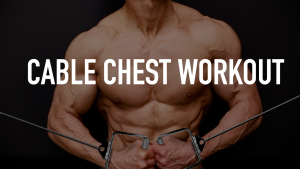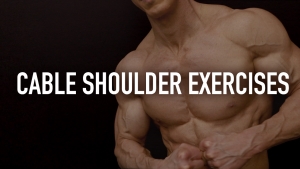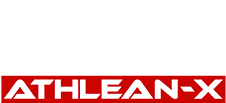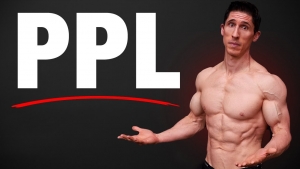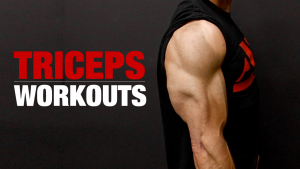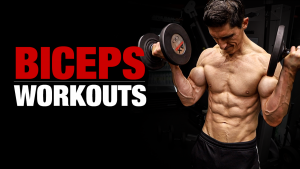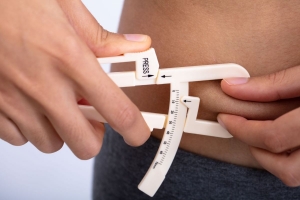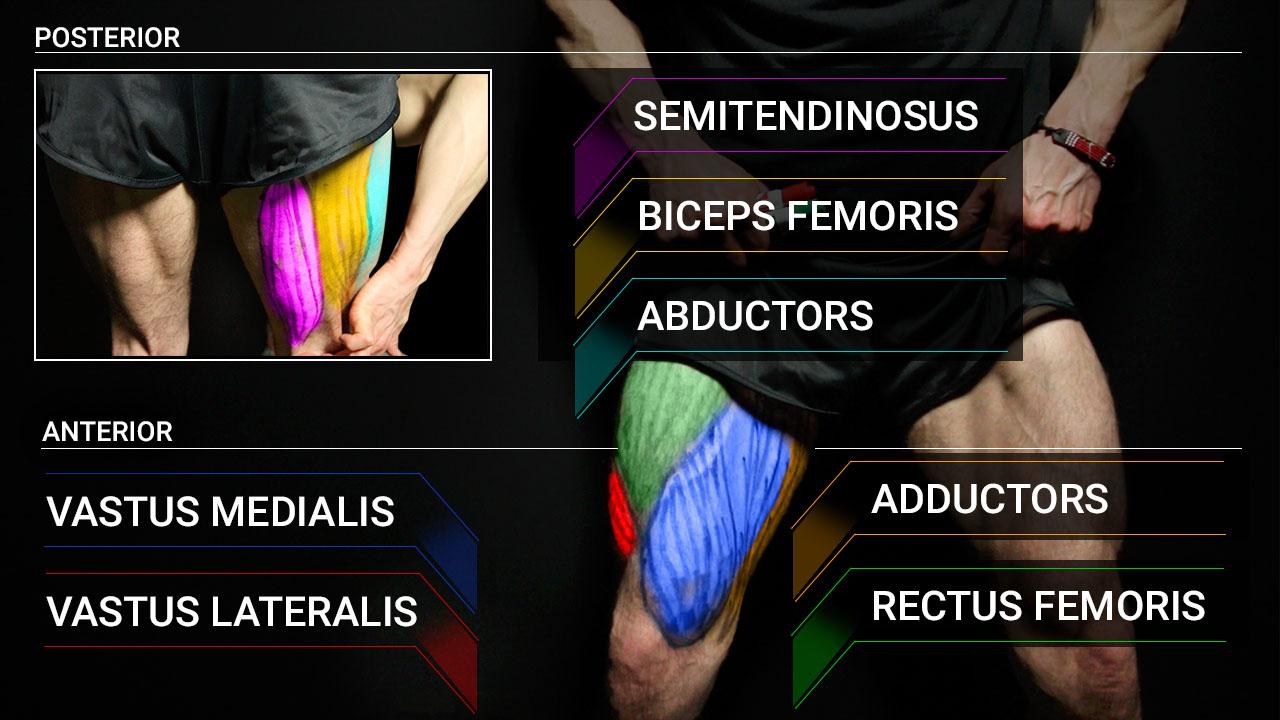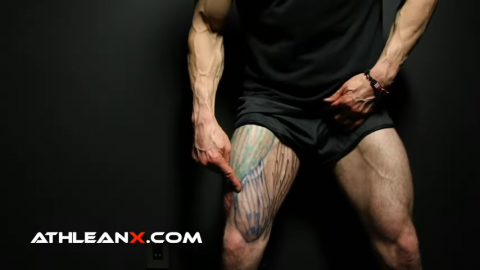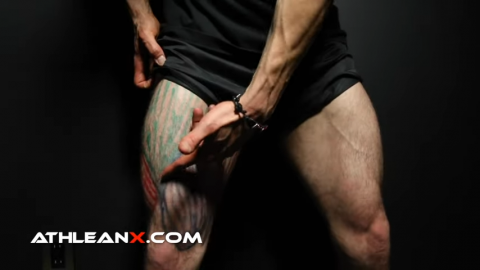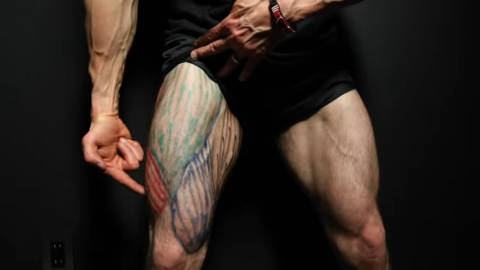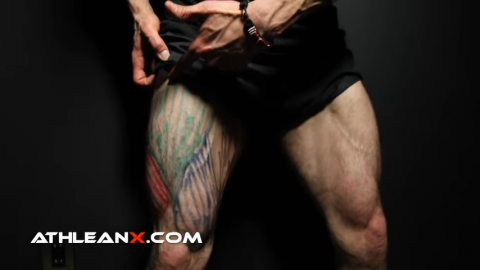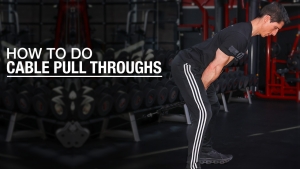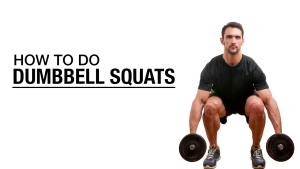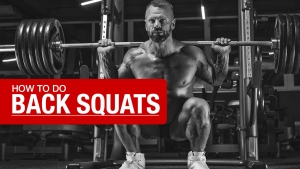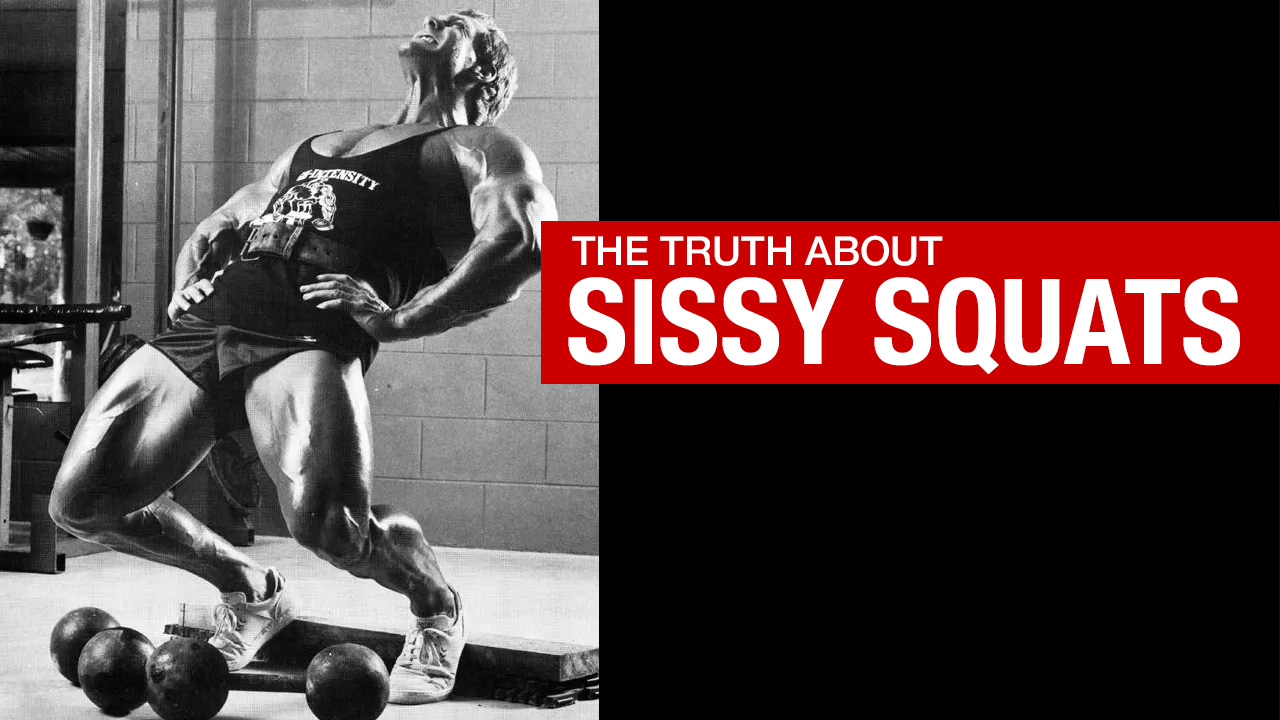
SHOULD YOU DO SISSY SQUATS?
Sissy Squats are one of the most polarizing exercises in any workout routine.
Whether you’ve seen someone struggling through sets on a sissy squat machine or you’ve tried them yourself as part of a bodyweight quad exercise, this one exercise raises a lot of questions.
Does the Sissy Squat deserve a place in your leg workouts?
Or is it just a dangerous position masquerading as an effective compound exercise and fantastic leg exercise?
Here’s the truth: just because an exercise targets the quad muscles (we’re talking about the rectus femoris) doesn’t mean it’s the best move for building strength or avoiding knee pain.
In fact, the wrong starting position or too much weight load can turn this into a stressor to knee flexion.
Today, we’re breaking down the Sissy Squat and why it might not be the smartest choice for your leg exercise routine.
It’s time to rethink this “quad-dominant” move and how it fits into your pursuit of juicy muscle-building gains.
SISSY SQUATS: MUSCLES WORKED
When it comes to quad-dominant exercises, people claim that the Sissy Squat puts your quadriceps femoris front and center.
This powerhouse muscle group dominates the front of your thighs and plays a key role in knee extensions, hip extensions, and overall lower body movement.
But before you load up a Sissy Squats machine or start piling on additional weight, you need to understand the primary muscles at work.
The quadriceps femoris is a group of four distinct muscles, each with its own unique role in driving muscle development and supporting movement with knee flexion.
Let’s break it down.
VASTUS MEDIALIS
Positioned on the inner thigh just above the knee, the Vastus Medialis is often called the “teardrop muscle.”
This quadricep targeting muscle not only powers knee extensions but also stabilizes the kneecap, helping to prevent foot injury during intense exercises like Leg Press workouts or bodyweight quad exercises.
It’s essential for maintaining balance and strength during dynamic bodyweight leg workouts or heavier lifts like a squat workout.
VASTUS INTERMEDIUS
Hidden beneath the other quads, the Vastus Intermedius works behind the scenes, powering every knee extension you perform.
This biarticular muscle ensures smooth movement of the knee joint, making it indispensable in exercises requiring upright torso stability, such as Leg Extensions or bodyweight workouts for your legs.
It might not steal the spotlight, but this muscle is crucial for generating that base for strength needed in high-performance leg training.
VASTUS LATERALIS
Running along the outer side of the thigh, the Vastus Lateralis is a major player when it comes to producing force in exercises like decline exercises, Cable Leg Extensions, and even Deadlift variations.
This muscle stabilizes the outside of the knee, ensuring proper alignment during intensity workouts.
If you’re aiming for serious gains, you need the Vastus Lateralis firing on all cylinders.
RECTUS FEMORIS
Last but not least, the Rectus Femoris takes center stage as the only part of the quadriceps that crosses both the hip and the knee.
This makes it a dual-action muscle, handling both knee extensions and hip flexion.
Its unique positioning means it’s heavily engaged during squat exercises, Weighted Sissy Squats, and even certain core exercises.
Highly developed rectus femoris muscles are essential for explosive power and performance in lower body exercises.
DO I RECOMMEND SISSY SQUATS?
Let me save you some time and potentially your knees. The answer is a hard no.
If you’ve been training long enough, you’ve probably heard people preach that Sissy Squats are a phenomenal exercise for targeting the quad muscles.
What’s the story going around about this exercise?
They’re a quad-dominant exercise designed to take your hamstrings and glutes out of the exercise, focusing all the tension on the rectus femoris and other knee extensors.
Sounds great, right? Wrong.
Here’s the problem: while the Sissy Squat aims to isolate the quads by keeping the torso upright and tilting the hip position into a posterior tilt, it creates a dangerous position for your knee joint.
The range of motion forces your knees far past your feet, shifting the weight load directly onto the patellar tendons.
Over time, this leads to a massive stressor to the knee, increasing the risk of knee pain and potential injury.
Don’t get me wrong. Sissy Squats do engage the quad muscles effectively, but at what cost?
Your leg workouts should be about building strength safely and targeting a smorgasbord of muscle activation without compromising stability or risking long-term damage.
There are far better squat variations that deliver the same muscle development without the knee pain.
Some examples include a properly performed Traditional Squat, Hack Squat, and even bodyweight exercises like an Air Squat.
Now, let’s address the elephant in the room: what about knees over toes?
Isn’t that supposed to be okay? Yes, it’s not the knee travel itself that’s the issue. It’s the line of force.

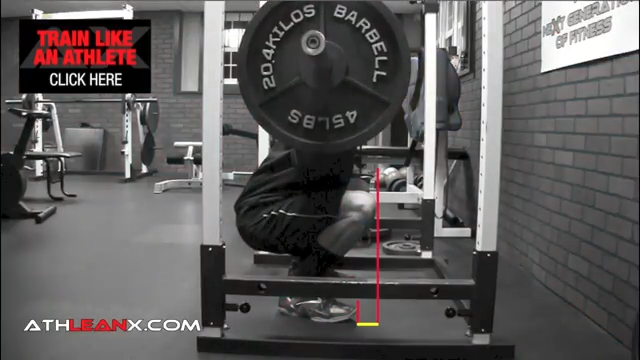
In a well-executed squat exercise, the weight load is distributed back through the hips or slightly forward to the big toe, keeping the pressure manageable for the knee joint.
With Sissy Squats, that line of force shifts dangerously forward, slamming into your patellar tendon.

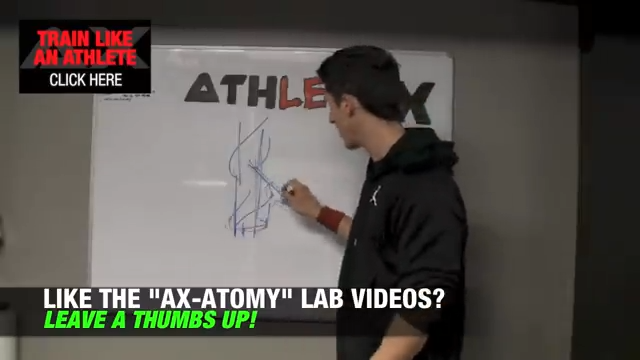
Add extra weights into the mix, and you’ve got a recipe for disaster.
SAFER SISSY SQUAT ALTERNATIVE EXERCISES
So, should you include Sissy Squats in your exercise routine?
No. There’s no biggest benefit that justifies the risk.
Stick to safer quad exercises that support trunk stability, protect the ankle joint, and promote comprehensive, well-rounded muscle growth.
You’ll still get those sought-after muscle-building gains without causing damage to your knees.
Here are some much better quad-dominant exercises to choose instead of Sissy Squats:
LEG PRESSES

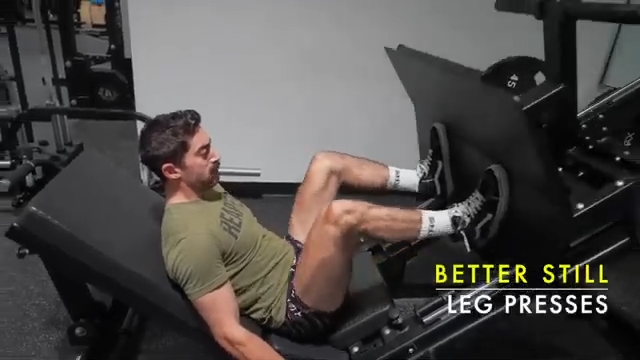
HOW TO DO LEG PRESSES:
- Start by positioning yourself in the Leg Press machine with your back and head firmly against the padded support. Adjust the seat to ensure proper alignment. Your hips, knees, and feet should line up, and your body should feel secure. This setup is as crucial as dialing in the rack position on a Barbell Squat.
- Place your feet flat and shoulder-width apart on the machine with foot plates or steel foot plates. To target different muscle groups, adjust your foot placement. A lower position emphasizes the quads with more knee flexion, while a higher placement recruits the glutes and hamstring muscles.
- Disengage the safety bars and slowly lower the platform by bending your knees. Focus on controlled motion as you lower until your knees form a 90-degree angle. Avoid letting your knees extend past your toes, as this keeps the tension on your legs and reduces stress on your joints.
- Push the platform away by extending your legs while keeping the motion smooth and controlled. Engage your quads, glutes, and hamstrings throughout the lift, and avoid locking your knees at the top.
WHAT MAKES IT EFFECTIVE: If you want to zero in on your quads, lower your feet on the platform. This increases knee flexion and shifts the focus directly onto your quads, making it as effective as a Cable Leg Extension machine for targeted strength.
HACK SQUAT

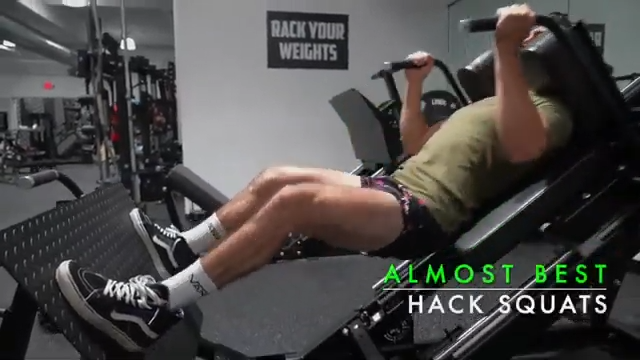
HOW TO DO HACK SQUATS:
- Adjust the pad and footplate so your shoulders and back are fully supported. Step onto the footplate and position your shoulders snugly under the pads, leaning firmly against the backrest.
- Place your feet shoulder-width apart with toes slightly pointed out. Adjust your stance slightly to target specific muscles, such as your quads or glutes, while staying comfortable.
- Bend your knees and lower yourself along the machine’s track. Keep your back and head pressed against the pad and descend until your thighs are at least parallel to the footplate. Avoid letting your knees move too far past your toes to minimize stress on your joints.
- Push through your heels and extend your legs to return to the starting position.
- Keep your core braced and avoid locking your knees at the top to maintain tension on your quads, glutes, and hamstrings.
WHAT MAKES IT EFFECTIVE: The Hack Squat machine provides a stable and controlled environment for quad-dominant training. The adjustable footplate allows for the ankle dorsiflexion necessary to mimic a natural squat, while keeping your form locked in and your joints protected. If you’re looking to maximize quad activation without the balance demands of free weights, this is your go-to.
GOBLET SQUAT


HOW TO DO THE GOBLET SQUAT:
- Stand with your feet shoulder-width apart. Whether you’re using body weight or a heavy weight, maintaining proper foot placement is essential.
- Hold a dumbbell vertically at upper chest height, clasping the top end with both hands.
- Engage your core before the movement. This activation protects your spine and prevents unnecessary forward lean, which can happen if the weight starts pulling you off balance.
- Push your hips back and bend your knees, lowering your body as if you’re sitting on an invisible chair.
- Aim to lower until your thighs are at least parallel to the ground. Keep your ankle dorsiflexion smooth, ensuring your heels stay planted while your knees track over your toes.
- This setup avoids the awkward feeling of poorly adjusted horizontal adjustment positions seen on some exercise machines.
- Keep your chest upright and your back straight throughout the movement.
- Press through your heels and return to the starting position.
- Perform your desired number of reps. If you’re pushing for failure with a bunch of weights or even a heavy-duty resistance band, make sure you’re resting adequately between sets to maintain peak performance.
WHAT MAKES IT EFFECTIVE: This upward motion should feel powerful yet controlled, with your quads, glutes, and core firing on all cylinders. If you’re working with heavy weight, don’t rush. Control is key for both strength and safety.
SLED PUSH / PULL

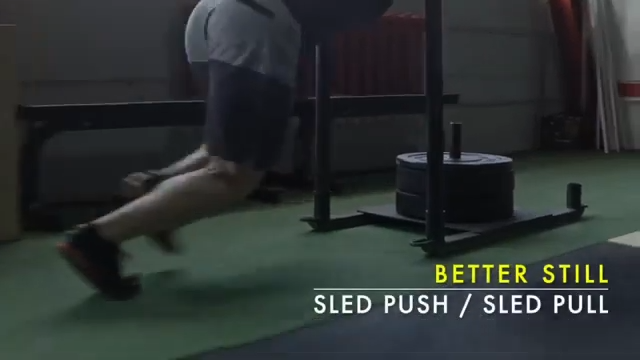
HOW TO DO THE SLED PUSH/PULL:
- Start by loading the sled with a weight that challenges you without breaking your form.
- Place your feet hip-width apart and lean into the sled. Your hands should be at chest height on the handles, with arms slightly bent. Form a straight line from your head to your ankles. Think of it as your athletic power stance.
- Brace your core, keep your back flat, and drive forward with your legs. Push off the balls of your feet, focusing on powerful leg extensions to move the sled. This is where your quads, glutes, and calves earn their keep.
- Push over a predetermined distance or time that challenges your lower body without compromising your form. Keep your movements smooth and controlled. This isn’t about sprinting recklessly but rather driving efficiently.
- If you want to pull the sled, attach a rope or harness to the sled if it’s not already equipped. Face away from the sled, grip the rope or straps firmly with both hands, and lean back slightly to engage your core.
- Bend your knees and take strong, deliberate steps backward, pulling the sled as you go. Focus on engaging your quads, hamstrings, and glutes with every step.
WHAT MAKES IT EFFECTIVE: The Sled Push/Pull isn’t about speed. It’s about strong, steady steps to maximize engagement and minimize wasted energy.
DUMBBELL STEP-UP

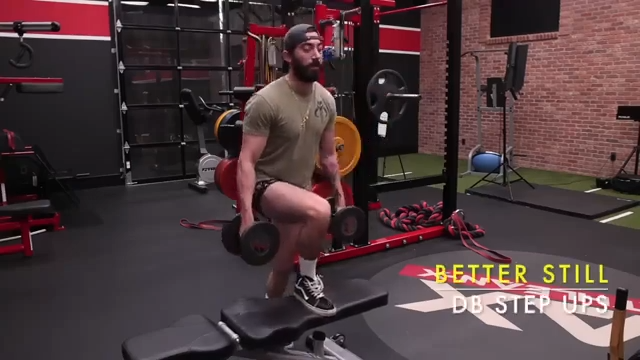
HOW TO DO THE DUMBBELL STEP-UP:
- Choose a pair of dumbbells that challenge you while allowing you to maintain proper form. This ensures balance, stability, and the right amount of tension for effective muscle activation.
- Use a sturdy bench or elevated surface that brings your knee to a 90-degree angle when your foot is placed on it. The height is key for targeting your quads and glutes without overloading your joints.
- Stand upright with your feet hip-width apart, holding a dumbbell in each hand at your sides. Keep your chest up and core tight to stabilize your body.
- Place your left foot firmly on the bench. Push through your heel to drive your body upward, bringing your right foot to join your left on the bench. Maintain an upright posture throughout the movement.
- Lower your right foot back to the floor, followed by your left, in a slow and controlled motion. This eccentric phase is where your quads really get tested.
WHAT MAKES IT EFFECTIVE: The Dumbbell Step-Up hammers your quads, glutes, and hamstrings while forcing you to stabilize through your core. The added eccentric overload as you step down builds strength and resilience in your quads.
Sissy Squats may seem like a great quad exercise, but the excessive strain they place on your knees makes them a risky choice.
Instead, opt for safer, more gentle exercises like Goblet Squats, Hack Squats, Sled Pushes, or Leg Presses, which effectively target your quads while protecting your joints.
Prioritize exercises that build strength without compromising your knees.
Check out our complete line of ATHLEAN-RX Supplements and find the best training program for you based on your fitness level and goals.
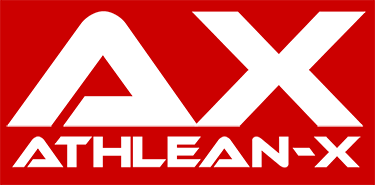
- I wouldn’t recommend doing Sissy Squats as a part of your lower body workout. Here’s why:
- The extreme forward knee angle shifts the line of force directly onto the patellar tendons, increasing the risk of injury.
- Sissy Squats place unnecessary stress on the knee joint, leading to potential long-term damage.
- By isolating the quads and excluding the hamstrings and glutes, this exercise limits overall lower-body muscle development.
- The unnatural posterior tilt and exaggerated knee travel create an unsafe and inefficient movement pattern.
- The potential benefits of Sissy Squats are outweighed by the significant risks, making them an inefficient choice for most training programs.
- Focus on exercises that deliver results without jeopardizing your joint health. Sissy squats simply aren’t worth the risk.
- Safer and more effective exercises like Goblet Squats, Hack Squats, Leg Presses, and Sled Pushes provide similar quad activation without the injury risks.
SISSY SQUATS FAQS
Let me save you some time and potentially your knees. The Sissy Squat may look like a quad-burning move and a phenomenal exercise, but in reality, it’s a difficult exercise that puts your knee joint in a dangerous position with very little long-term upside.
The pitch for Sissy Squats is simple: they’re marketed as a quadricep targeting exercise, designed to isolate your quads while taking your hamstrings and glutes out of the equation.
By keeping a secure torso, tilting your hip position into a posterior tilt, and leaning back into a kneeling position, the rectus femoris and other knee extensors do most of the work.
Sounds effective, right? Not so fast.
Here’s the problem: While the Sissy Squat does hit the quads as a focal muscle, the extreme forward knee angle creates an enormous stressor to the knee by shifting the line of force directly into the patellar tendon.
When your range of motion forces the knees way out past your toes, all the pressure lands on one vulnerable area.
Add in extra weights like a single weight, light weight vest, or light weight plate, and you’re only accelerating the risk of long-term injury.
If you’re a guy with knees that have been through the grinder, this exercise is a fast track to knee pain.
Even if you don’t feel it after the first couple of times, it’s the repeated load over time that leads to damage.
Sissy Squats are a disaster waiting to happen for your knee joint.
At first glance, they might seem like an excellent exercise for isolating your quads.
The appeal lies in their ability to take your hamstrings and glutes out of the picture, shifting the workload to the rectus femoris and other knee extensors.
It’s a quad-dominant exercise that promises big results but here’s the catch: it comes with a massive downside.
The range of motion in a Sissy Squat forces your knees far past your feet, with the weight load landing squarely on your patellar tendons.
This extreme forward angle pushes the line of force directly into the most vulnerable part of your knee.
Even if you nail a perfect Sissy Squat or add a touch of extra stability using a Sissy Squats machine, the biomechanics are flawed.
Over time, this repeated stress becomes a one-way ticket to knee pain and potential injury.
Here’s the deal on how to do Sissy Squats correctly… you don’t.
Sissy squats are not a safe option if you care about the longevity of your knee joint and want to build lower body muscle mass without unnecessary risks.
While they’re often touted as a quad-dominant exercise, the extreme forward knee angle and reliance on your patellar tendon to support the movement make them a primary benefit for injury, not gains.
Instead of risking knee damage with sets of Sissy Squats, focus on safer and more effective alternatives that engage your quads and promote proper muscle group shifts.
These exercises deliver the benefits of quad isolation and strength building without the hassle of improper resistance loading or joint stress.
Some Sissy Squat alternatives include the Traditional Barbell Squat, Hack Squat, Goblet Squat, Sled Push/Pull, and Leg Press.
No, Sissy Squats are not designed to grow your glutes.
While they’re often hyped as one of the fancier exercises for targeting your quads, they deliberately take your hamstring exercises muscles and glutes out of the equation.
The movement isolates the quads by shifting your standing position into a posterior tilt, which minimizes engagement from the muscles you’re trying to grow.
If you want to build glutes effectively, skip the common Sissy Squat and focus on exercises that load the posterior chain properly.
Movements like Barbell Hip Thrusts, Bulgarian Split Squats, or Sled Pushes allow you to use body weight or add external resistance equipment with weights. These exercises let you target the glutes without putting unnecessary strain on your knees.
Instead of dealing with the hassle of loading weights in an inefficient exercise, prioritize movements that use the glutes as the primary driver.
REFERENCES
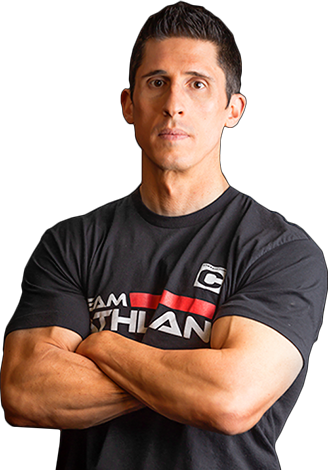
Jeff Cavaliere M.S.P.T, CSCS
Jeff Cavaliere is a Physical Therapist, Strength Coach and creator of the ATHLEAN-X Training Programs and ATHLEAN-Rx Supplements. He has a Masters in Physical Therapy (MSPT) and has worked as Head Physical Therapist for the New York Mets, as well as training many elite professional athletes in Major League Baseball, NFL, MMA and professional wrestling. His programs produce “next level” achievements in muscle size, strength and performance for professional athletes and anyone looking to build a muscular athletic physique.
